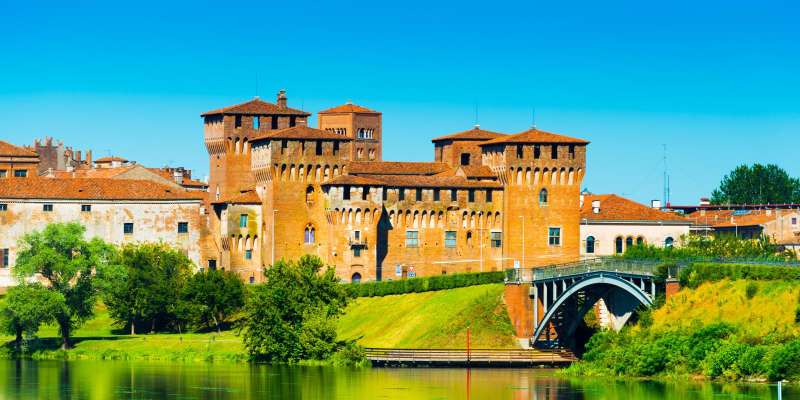- Home
- Useful Tips
- Mantua's most atmospheric...
Many visitors to Mantua miss its most authentic Renaissance atmosphere by following crowded tourist routes. Recent surveys show 68% of day-trippers never venture beyond the Ducal Palace, leaving the city's living history unexplored. The frustration comes when travelers later discover they walked right past secretive courtyards where Monteverdi composed madrigals or alleys lined with original frescoes. These overlooked streets hold the true spirit of a city that shaped Renaissance art and music, yet most guidebooks reduce Mantua to just three highlight stops. Without local knowledge, you risk experiencing Mantua as a museum rather than the breathing masterpiece it truly is.


Why Piazza Sordello's side streets reveal Mantua's true character
The vast Piazza Sordello might draw your eye first with its cathedral and Ducal Palace, but the real magic lingers in the narrow vicoli radiating from its edges. Via Accademia hides the former music school where young Claudio Monteverdi studied, its uneven cobbles still echoing with acoustic secrets. Turn onto Via Tazzoli to discover family-run osterie with centuries-old recipes, their arched doorways framing scenes unchanged since the Gonzaga dynasty. These streets maintain their original width specifically to preserve the human-scale intimacy Renaissance urban planners cherished. Notice how the buildings lean slightly inward – a deliberate design choice to create theatrical sightlines for processions. Unlike the crowded main square, these alleys let you appreciate Mantua's distinctive brickwork up close, from the rosy hues of morning light to the dramatic shadows at dusk.
How Via Pescheria's fish market arches conceal Renaissance art
What begins as a simple walk toward the old fish market transforms into a journey through layered history on Via Pescheria. The porticoes lining this street served practical purposes for 16th-century merchants but now shelter unexpected artistic treasures. Peer upward between the arches to spot faded frescoes of sea creatures and merchant symbols, best visible in the golden hour light. Local legend claims the third courtyard on the left still bears a barely visible portrait of young Isabella d'Este, painted by a lovestruck artist. The street's gentle curve follows the original medieval walls, creating ever-changing perspectives that Renaissance architects would have approved. Time your visit for late morning when the winter sun illuminates the terracotta details, or early evening when the streetlamps cast theatrical shadows reminiscent of Mantua's famous court performances.
The secret route from Casa del Mercato to Teatro Bibiena
Connecting two architectural masterpieces, the zigzag path through Via Concezione offers what locals call 'Mantua in miniature.' Start at Casa del Mercato's magnificent loggia, then let the street's natural flow guide you past artisan workshops continuing Renaissance traditions. The key is to follow the subtle downward slope – this was the original processional route linking commerce and culture. Halfway along, a nearly invisible alley on your right (Vicolo Nani) frames a perfect view of Teatro Bibiena's domed roof. This spontaneous vista captures Mantua's genius for planned urban theater. The street's width narrows intentionally as you approach the theater, creating a sense of anticipation that culminates in Bibiena's breathtaking interior. Those who rush directly between these landmarks miss the deliberate choreography of space that makes Mantua a UNESCO-designated city.
Where to find Mantua's most authentic Renaissance atmosphere after dark
As sunset paints the brickwork gold, Via Giustiziati transforms into Mantua's most atmospheric evening promenade. Unlike daytime when delivery vans disrupt the ambiance, the post-dinner passeggiata here follows centuries-old social rituals. Locals still stroll this street in leisurely loops as their ancestors did, pausing to admire the illuminated facades of Palazzo d'Arco and its lesser-known neighbors. The street's slight elevation creates natural viewing platforms for observing architectural details often missed in guidebooks. For the full experience, time your walk with the church bells at 9pm when the street's acoustics carry the sound in cascading echoes. This is when you'll truly feel Mantua's Renaissance spirit alive – not in crowded attractions, but in the living tradition of la bella figura, where simply walking becomes an art form.



